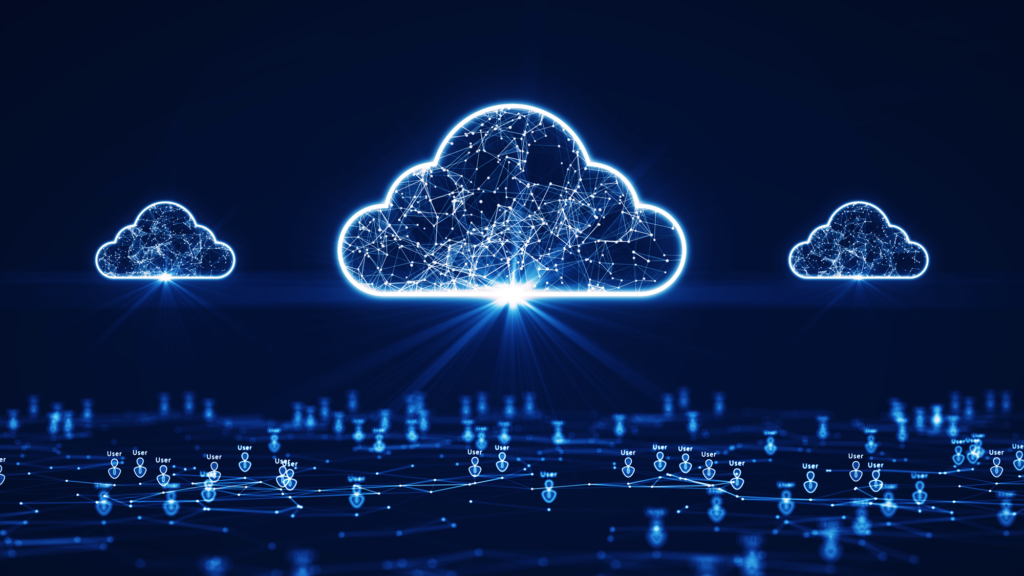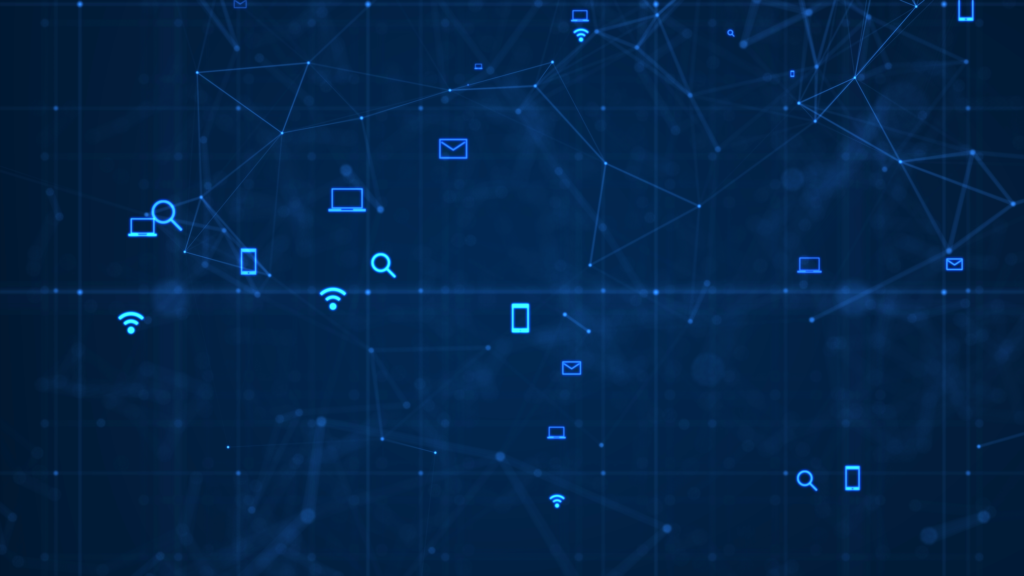In today’s fast-paced digital world, businesses are always on the lookout for efficient and cost-effective ways to manage their IT infrastructure. This is where cloud computing comes in as a game-changer. Cloud computing refers to delivering computing services, including storage, processing, and software, over the internet. By leveraging the power of the cloud, businesses can reduce costs, increase agility, and achieve better scalability.

Cloud computing has revolutionized how businesses operate, allowing them to access their data and applications anywhere, anytime. In fact, cloud computing has become an essential component of the modern business landscape. Gartner forecasts worldwide public cloud end-user spending to reach nearly $600 Billion in 2023.
In this blog, we will explore the latest cloud computing trends that are shaping the future of businesses. From the rise of hybrid clouds to the emergence of serverless computing, we will cover all the essential trends you need to know to stay ahead of the curve.
The following topics will be covered in this blog:
- Edge Computing
- AI and ML
- Disaster Recovery
- Multi and Hybrid Cloud Solution
- Cloud Security and Resilience
- Cloud Gaming
- Kubernetes
- Serverless Computing
- Blockchain
- IoT
So, join us on this exciting journey to explore the latest cloud computing trends and discover how they can transform your business. Get ready to unlock the full potential of the cloud!
EDGE COMPUTING :
In today’s fast-paced business world, real-time decision-making is crucial. The emergence of edge computing has made this possible by processing data closer to the source, enabling faster and more efficient data analysis. Edge computing refers to the process of capturing, storing, and analyzing data at the edge of the network, closer to where the data is generated.
The benefits of edge computing are manifold:
- It reduces the time it takes to transfer data to a central server, making data processing faster and more efficient.
- It allows businesses to analyze data in real-time, enabling quick decision-making.
- Edge computing ensures greater data privacy and security since data is processed on-site rather than being transferred to a central location.
Edge computing has a range of real-world applications. For instance, in the healthcare industry, wearable devices and sensors can capture patient data and transmit it to a nearby edge server for analysis. In the manufacturing industry, edge computing can be used to monitor equipment in real-time, allowing for predictive maintenance and reducing downtime.
However, edge computing also presents certain challenges, such as the need for robust connectivity and power supply at the edge and the difficulty of managing a distributed computing infrastructure.
AI AND ML :
Artificial intelligence (AI) and machine learning (ML) are transforming how businesses operate. In cloud computing, AI and ML refer to the use of algorithms and models to analyze and interpret data. The benefits of AI and ML in cloud computing are numerous, and they can help businesses identify patterns and trends, automate processes, and improve decision-making.
The current trend in AI and ML in cloud computing is the use of natural language processing (NLP) and image recognition. NLP is used to analyze unstructured data, such as text and speech, while image recognition is used to analyze visual data. This is leading to the development of new and innovative applications, such as virtual assistants and chatbots.
The future of AI and ML in cloud computing is promising. For example, AI and ML algorithms can be used to predict customer behavior, enabling businesses to provide personalized recommendations and improve customer experience. However, there are also potential challenges and limitations, such as the risk of bias in algorithms and the need for extensive data sets to train ML models.
DISASTER RECOVERY :
No business is immune to disasters. Natural disasters, cyberattacks, power outages, and equipment failures can strike at any time, putting business continuity at risk. In such cases, disaster recovery (DR) is crucial for maintaining business operations and minimizing the impact of the disaster. Disaster recovery in cloud computing involves replicating and storing critical data and applications in a cloud-based environment, allowing businesses to recover their IT infrastructure quickly in case of a disaster.
Cloud-based disaster recovery solutions offer several advantages over traditional DR solutions. They are more cost-effective and scalable and provide greater flexibility in terms of recovery time objectives (RTOs) and recovery point objectives (RPOs). With cloud-based DR, businesses can easily replicate and store their data and applications in a secure cloud environment, reducing the risk of data loss or corruption. In case of a disaster, businesses can quickly spin up their infrastructure in the cloud, allowing them to resume operations with minimal downtime.
To implement a cloud-based DR strategy, businesses must carefully consider their RTOs and RPOs, as well as the type of data and applications they need to protect. They should also choose a reliable cloud provider with a proven track record in DR and disaster mitigation. It’s also essential to regularly test and update the DR plan to ensure that it remains effective and relevant.
Despite the many benefits of cloud-based disaster recovery solutions, there are also potential challenges and limitations. These include bandwidth constraints, data privacy concerns, and the risk of vendor lock-in. Businesses must carefully evaluate these factors when choosing a cloud-based DR solution.
MULTI AND HYBRID CLOUD SOLUTIONS :
As businesses continue adopting cloud computing, many find that a single cloud provider may not meet all their needs. This is where multi and hybrid-cloud solutions come into play. Multi-cloud involves using multiple cloud providers, while hybrid cloud involves combining a public cloud provider with a private cloud or on-premises infrastructure.
Multi and hybrid cloud solutions offer several benefits, such as increased flexibility, improved performance, and reduced vendor lock-in. Businesses can choose the cloud providers that best meet their needs and use each for its specific strengths. For example, they may use one cloud provider for storage and another for compute or a private cloud for sensitive data and a public cloud for less sensitive data.
Implementing a multi or hybrid cloud strategy requires careful planning and consideration of several factors, such as data integration, security, compliance, and governance. It’s essential to clearly understand each cloud provider’s capabilities and limitations and ensure that the solutions are integrated seamlessly.
Despite the many benefits of multi and hybrid cloud solutions, there are also potential challenges and limitations. These include increased complexity, increased costs, and the need for specialized expertise.
Businesses must carefully evaluate these factors when deciding whether to adopt a multi or hybrid cloud strategy.
CLOUD SECURITY AND RESILIENCE :
In today’s digital landscape, cloud security and resilience have become more critical than ever. With the exponential growth of cloud computing, cyber threats have also increased, making cloud security and resilience an ongoing concern for businesses of all sizes. Cloud security protects data, applications, and infrastructure from unauthorized access, theft, and other malicious attacks. Cloud resilience, on the other hand, is the ability of a cloud system to maintain normal operations during a cyber-attack, natural disaster, or other disruptive events.
As cloud computing becomes more prevalent, new and emerging threats are emerging. From phishing attacks to data breaches and denial-of-service (DDoS) attacks, cloud security, and resilience challenges are constantly evolving. To overcome these challenges, businesses must adopt a proactive approach to cloud security and resilience, implementing best practices such as multi-factor authentication, encryption, and regular backups.
Looking to the future, cloud security and resilience will continue to be a top priority for businesses. As cyber threats become more sophisticated, new technologies such as artificial intelligence (AI) and machine learning (ML) will be critical in identifying and responding to potential security breaches. Additionally, cloud providers will need to ensure that their systems are designed with built-in resilience to minimize the impact of any potential disruptions.
CLOUD GAMING :
Cloud gaming is the latest revolution in the gaming industry, allowing players to enjoy their favorite games without needing high-end hardware or gaming consoles. With cloud gaming, players can stream games over the internet on any device, including smartphones, tablets, and smart TVs. This has opened up new opportunities for gamers, allowing them to play their favorite games anytime, anywhere, with no lag or delays.
Despite the many benefits of cloud gaming, some challenges are also to overcome. One of the biggest challenges is latency, as the data has to travel from the cloud server to the player’s device, causing some delay. However, networking and cloud technology advancements are rapidly reducing latency, making cloud gaming more accessible and enjoyable.
Cloud gaming is also experiencing a surge in popularity, with many new players entering the market. Companies such as Google, Amazon, and Microsoft are investing heavily in cloud gaming infrastructure, paving the way for new gaming experiences and business models. However, there are also concerns around data privacy and security, as players’ personal information and gaming history are stored in the cloud. It will be important for cloud gaming providers to address these concerns and ensure that players’ data is kept secure and private.
Looking to the future, cloud gaming has immense growth potential, particularly with the emergence of new technologies such as virtual and augmented reality. As cloud gaming becomes more mainstream, we can expect to see new gaming experiences and business models transforming the gaming industry as we know it.
KUBERNETES :
Kubernetes, also known as K8s, is an open-source container orchestration platform that automates containerized applications’ deployment, scaling, and management. Google originally developed it, and is now maintained by the Cloud Native Computing Foundation (CNCF).
The main benefits of Kubernetes include efficient resource utilization, improved scalability and availability, and streamlined application deployment and management. With Kubernetes, developers can easily deploy and manage containerized applications across multiple hosts, and the platform automatically handles scaling, load balancing, and fault tolerance.
Kubernetes has a wide range of use cases, including deploying and managing microservices, running batch processing jobs, and building scalable web applications. It is also a popular choice for organizations that want to move their legacy applications to the cloud.
To successfully deploy and manage Kubernetes clusters, best practices include:
- Selecting the appropriate hardware and network infrastructure.
- Designing and implementing efficient and secure networking.
- Configuring cluster-level security policies.
- Using monitoring and logging tools to ensure performance and availability.
In terms of future prospects, Kubernetes is expected to continue to grow in popularity as more organizations adopt containerization and microservices architecture. Challenges include managing complexity and maintaining security as clusters grow in size and complexity.
SERVERLESS COMPUTING :
Serverless computing, also known as Function-as-a-Service (FaaS), is a cloud computing model that allows developers to run applications without having to manage server infrastructure. The cloud provider automatically manages and scales the infrastructure required to execute the code, and charges the user based on the actual usage of the application.
The main benefits of serverless computing include reduced operational overhead, improved scalability and availability, and reduced costs for low-traffic or intermittent workloads. Use cases include:
- Processing data from IoT devices.
- Building serverless web applications.
- Implementing serverless backends for mobile applications.
Best practices for implementing serverless computing include:
- Designing efficient and scalable functions.
- Minimizing the use of stateful operations.
- Leveraging the built-in logging and monitoring tools provided by the cloud provider.
Security considerations include implementing strong access controls, monitoring and logging for potential security breaches, and ensuring compliance with data privacy regulations.
Potential challenges and limitations of serverless computing include the difficulty of debugging and testing functions in a distributed environment, the need to refactor legacy applications to be serverless-compatible, and the potential for vendor lock-in with specific cloud providers. Despite these challenges, serverless computing is expected to continue to grow in popularity as more developers adopt cloud-native architectures and microservices-based application development.
BLOCKCHAIN :
Blockchain technology has been one of the most revolutionary advancements in the past decade and is now being integrated into cloud computing services. In simple terms, blockchain is a decentralized, immutable ledger that enables secure and transparent transactions without requiring a central authority. In cloud computing, blockchain can be used for data storage, security, and identity managment.
The benefits of using blockchain in cloud computing are numerous. First and foremost, it provides enhanced security by utilizing cryptography to secure data and transactions. Additionally, it enables faster and more efficient transactions, reducing costs and improving transparency. Some use cases for blockchain in cloud computing include supply chain management, identity verification, and digital asset management.
Current and emerging trends in blockchain in cloud computing include cloud providers’ increasing adoption of blockchain as a service (BaaS). This allows organizations to deploy blockchain networks on cloud infrastructure without investing in their own infrastructure. Another trend is the integration of blockchain with other emerging technologies like AI and IoT to create more powerful solutions.
IoT :
The Internet of Things (IoT) is a network of physical devices, vehicles, home appliances, and other items that are embedded with sensors, software, and connectivity. IoT devices generate vast amounts of data that can be used to improve decision-making, automate processes, and enhance user experiences. Cloud computing plays a crucial role in IoT by providing the infrastructure and platform for data storage, processing, and analytics.
The benefits of using IoT in cloud computing are numerous. It enables real-time monitoring and control of devices and systems, providing valuable insights into performance and behavior. Additionally, it enables the integration of disparate systems and devices, improving efficiency and reducing costs. Some use cases for IoT in cloud computing include smart homes, industrial automation, and healthcare.
Best practices for implementing IoT solutions in the cloud include ensuring data security and privacy, designing for scalability, and prioritizing interoperability. Additionally, organizations should focus on selecting the right cloud provider and ensuring compliance with relevant regulations.
Potential challenges and limitations of IoT in cloud computing include data privacy concerns, the need for standardization, and the risk of security breaches. Additionally, the vast amount of data generated by IoT devices can lead to challenges in storage and processing, which may require specialized solutions.
UNLEASHING THE FULL POTENTIAL OF CLOUD COMPUTING WITH PITAN INDUSTRIES :
Cloud computing has revolutionized how businesses operate and has brought many benefits, including increased flexibility, scalability, and cost-efficiency. This blog has discussed some of the most prominent cloud computing trends, including edge computing, AI and ML, disaster recovery, multi and hybrid cloud solutions, cloud security and resilience, cloud gaming, Kubernetes, serverless computing, blockchain, and IoT.
At PiTan Industries, we understand the challenges businesses face when it comes to cloud computing, and we strive to provide customized solutions to help them maximize the potential of these trends. Our expertise in cybersecurity consulting, MSP consulting, cloud architecture, M&A due diligence, and data center logistics enables us to identify the right cloud solutions that align with our client’s strategic goals and operational needs.
As businesses continue to adopt cloud computing solutions, the need for innovative and reliable cloud services will only continue to grow. PiTan Industries is committed to staying at the forefront of this rapidly evolving industry, and we are excited to help businesses unleash the full potential of cloud computing. With our expertise and experience, we are confident that we can help businesses navigate the complex landscape of cloud computing and achieve their goals.


